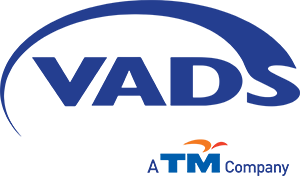Newsroom
- VADS
- Newsroom
- Types of Cyber Attacks that Business Owners Must Know
Types of Cyber Attacks that Business Owners Must Know
15 August 2023

Protecting businesses from cyber attacks is very important, especially in an increasingly digitally connected world. Business owners must understand the different types of attacks they may encounter in order to take effective countermeasures. In this article, we'll explore some of the different types of cyberattacks every business owner needs to know about.
1. Phishing
Phishing is a common type of attack in which attackers try to obtain sensitive information by impersonating trusted entities. This is often done through fake emails that contain malicious links or attachments that could contain malware. Business owners and employees need to be careful of suspicious emails and always verify the source before clicking on links or uploading data.
2. Ransomware
Ransomware is an attack in which hackers encrypt important data on your system and then demand a ransom for a decryption key. These attacks can result in large financial and operational losses. It is important to always have regular data backups and avoid paying ransoms as this does not guarantee successful data recovery.
3. Malware
Malware (malicious software) are programs designed to damage or take over your system. This can include viruses, trojans, worms, and spyware. Malware can spread via email attachments, malicious links, or unauthorized downloads. Business owners should ensure their antivirus and antispyware software is kept up to date.
4. DDoS (Distributed Denial of Service) Attacks
DDoS attacks aim to make online services unavailable by sending excessive internet traffic to the target server. As a result, the server becomes overloaded and the service becomes unresponsive. Businesses can overcome DDoS attacks by using DDoS mitigation services and improving their network infrastructure.
5. Man-in-the-Middle (MitM) Attack
MitM attacks involve hackers trying to steal data transmitted between two communicating parties, such as a user and a website. Attackers intrude in the middle of communication and can steal sensitive information such as passwords or credit card data. Using a secure connection (HTTPS) and an encrypted network can help protect against this attack.
6. XSS (Cross-Site Scripting) Attacks
XSS attacks involve inserting malicious code into a website or application, which is then executed by users visiting the site. This can result in theft of user data or even taking over accounts. Developers need to ensure the security of their code and implement protection against XSS attacks.
7. Zero-Day Assault
Zero-day attacks refer to exploiting vulnerabilities in software or systems that are not yet known to the software manufacturer or security service provider. This attack can be very damaging as no security patches or updates are available. It is important to keep the software up to date with the latest patches.
Business owners must protect themselves from various types of cyberattacks that can damage their company's operations and reputation. Identifying, understanding, and addressing the various types of cyberattacks that may occur are important steps in ensuring business digital security. By raising awareness about these attacks and adopting good security practices, business owners can better mitigate risk and keep their businesses safe in the threat-ridden digital age.
Related News
30 June 2025
20 June 2025
19 June 2025
27 May 2025
02 May 2025
17 April 2025
14 March 2025
07 March 2025
28 February 2025
18 February 2025
14 February 2025
11 February 2025
07 February 2025
28 January 2025
24 January 2025
21 January 2025
14 January 2025
07 January 2025
02 January 2025
30 December 2024
27 December 2024
17 December 2024
13 December 2024
10 December 2024
06 December 2024
03 December 2024
29 November 2024
19 November 2024
14 November 2024
08 November 2024
05 November 2024
01 November 2024
31 October 2024
25 October 2024
22 October 2024
18 October 2024
16 October 2024
11 October 2024
09 October 2024
08 October 2024
07 October 2024
27 September 2024
24 September 2024
20 September 2024
13 September 2024
10 September 2024
10 September 2024
06 September 2024
04 September 2024
02 September 2024
02 September 2024
09 August 2024
05 August 2024
26 July 2024
23 July 2024
02 July 2024
25 June 2024
18 June 2024
14 June 2024
06 June 2024
31 May 2024
24 May 2024
26 April 2024
02 April 2024
08 March 2024
05 March 2024
01 March 2024
29 February 2024
27 February 2024
23 February 2024
20 February 2024
16 February 2024
13 February 2024
09 February 2024
06 February 2024
02 February 2024
30 January 2024
26 January 2024
23 January 2024
19 January 2024
17 January 2024
12 January 2024
09 January 2024
05 January 2024
04 January 2024
29 December 2023
26 December 2023
20 December 2023
13 December 2023
08 December 2023
05 December 2023
28 November 2023
23 November 2023
17 November 2023
14 November 2023
09 November 2023
08 November 2023
01 November 2023
24 October 2023
17 October 2023
17 October 2023
11 October 2023
10 October 2023
06 October 2023
04 October 2023
29 September 2023
27 September 2023
26 September 2023
22 September 2023
21 September 2023
15 September 2023
08 September 2023
01 September 2023
22 August 2023
18 August 2023
15 August 2023
04 August 2023
26 July 2023
21 July 2023
04 July 2023
03 July 2023
30 June 2023
09 June 2023
01 June 2023
30 May 2023
26 May 2023
19 May 2023
17 May 2023
12 May 2023
04 April 2023
16 March 2023
09 March 2023
24 February 2023
22 February 2023
14 February 2023
13 February 2023
09 February 2023
31 January 2023
26 January 2023
23 January 2023
19 January 2023
12 January 2023
10 January 2023
06 December 2022
31 August 2022
17 June 2022
09 May 2022
20 April 2022
06 April 2022
01 April 2022
25 February 2022
23 February 2022
21 February 2022
18 February 2022
15 February 2022
11 February 2022
08 February 2022
07 February 2022
04 February 2022
02 February 2022
31 January 2022
17 January 2022
14 January 2022
07 January 2022
03 January 2022
28 December 2021
07 December 2021
01 November 2021
27 October 2021
25 October 2021
18 October 2021
15 October 2021
14 October 2021
21 September 2021
22 April 2021
15 April 2021
13 April 2021
08 April 2021
05 April 2021
26 March 2021
23 March 2021
18 March 2021
15 March 2021
12 March 2021
09 March 2021
04 March 2021
02 March 2021
26 February 2021
23 February 2021
19 February 2021
16 February 2021
11 February 2021
09 February 2021
04 February 2021
02 February 2021
26 January 2021
21 January 2021
19 January 2021
14 January 2021
12 January 2021
07 January 2021
05 January 2021
29 December 2020
17 December 2020
15 December 2020
10 December 2020
08 December 2020
04 December 2020
02 December 2020
18 November 2020
16 November 2020
13 November 2020
11 November 2020
10 November 2020
09 November 2020
06 November 2020
04 November 2020
28 October 2020
23 October 2020
12 October 2020
09 October 2020
06 October 2020
02 October 2020
30 September 2020
23 September 2020
19 September 2020
26 August 2020
22 July 2020
23 April 2020
16 April 2020
09 April 2020
26 March 2020
19 March 2020
12 March 2020
05 March 2020
27 February 2020
20 February 2020
13 February 2020
06 February 2020
